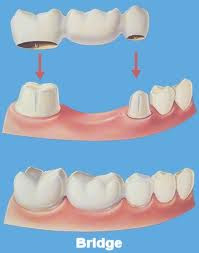
Here's why... if you already have pain, than in most cases, it's too late!
Just imagine your gums, teeth and the rest of your oral cavity were actually your heart, kidneys or liver. If they started hurting or started bleeding with a touch, would you panic?
You have to realize your oral cavity is a vital part of your body. It is not normal for your gums to bleed when you brush or floss. And no... it shouldn't be common to have a visible cavity in a tooth where it already created a hole.
Our body is a whole. Everything functions as one. This is the mentality you should adapt to in order to live a healthier lifestyle. If one organ in our body is not maintained, every other organ in that body is therefore under stress.
Normal dental visits should be mainly for maintenance. Regular dental maintenance are done in 6 months recall such that for example a car that should receive regular service to avoid further problems that are more costly in the future.
Regular dental recalls include few X-rays to detect cavities that are between the back teeth, a cleaning and examination. If everything seems to be good, next visit is in 6 months for the next recall.
So, if it hurts... most likely the cavity is too big and the tooth will most likely need a larger restoration. Teeth requiring large fillings are prone to breakage and possibility of ending up with a root canal. In most cases where a patient comes in with pain, the tooth will require a root canal, meaning the cavity has infected the pulp area where the nerve lies. After a root canal, the tooth most likely will require a post and a
crown as a restoration since to access the roots to do the root canal, too much tooth structure will be lost for a simple filling restoration.
Sometimes, the tooth will have too much decay where saving it would be impossible. In this case the tooth will need to be extracted. Since the tooth is gone, you will require a bridge or an implant to fill up the space. That could be expensive!
And periodontal disease is so much like high blood pressure... the silent killer! What I mean by this is that it may do so much damage to the bone and gums without the patient even detecting it. In most cases with sever periodontal disease, even the teeth that are strong and have no cavities will be lost because the bone that holds their roots are slowly wearing away. Yes.. this will lead to tooth loss, forcing the patient to wear dentures.
So... there you have it... when we ask you to visit us at Adult and Kid's Dental Care on a regular basis... it is for your best interest.. both economically and healt

h wise.
If it has been more than 6 months from your last dental visit.. call (818)881-6761 to make an appointment.
































